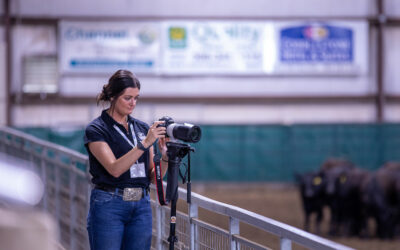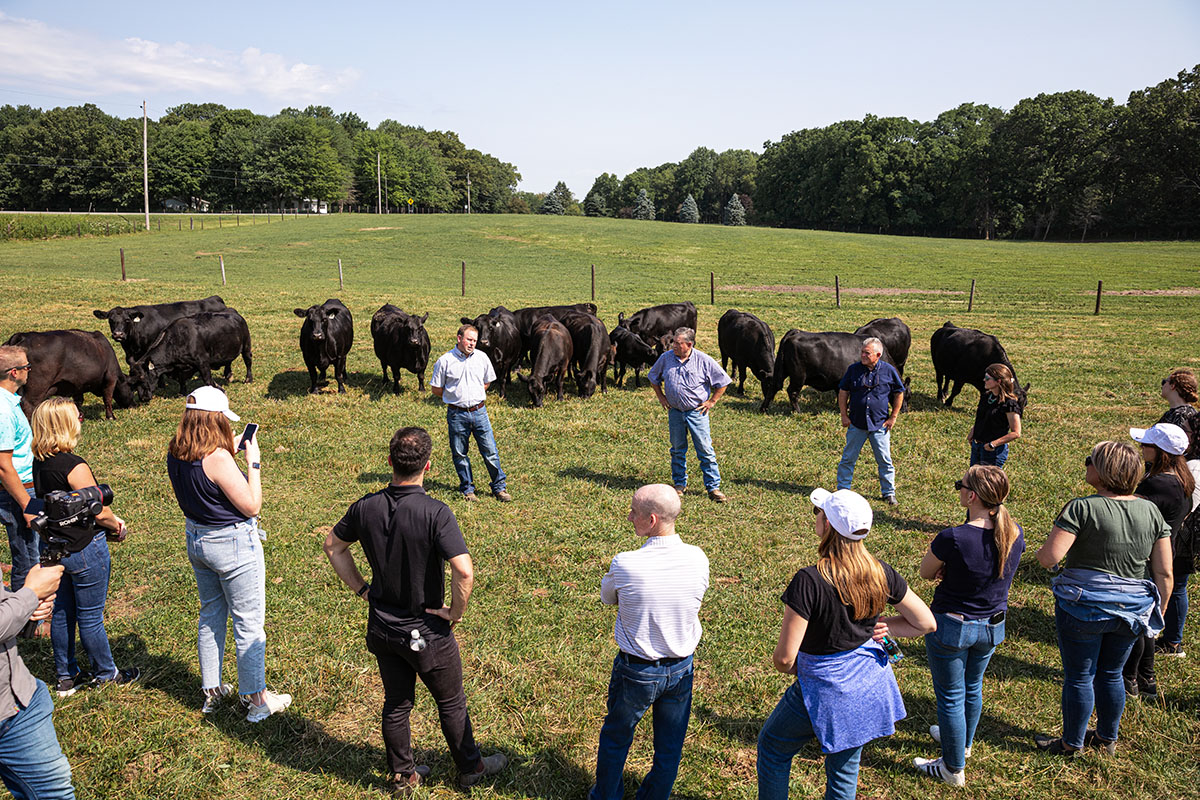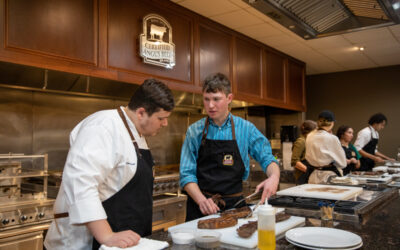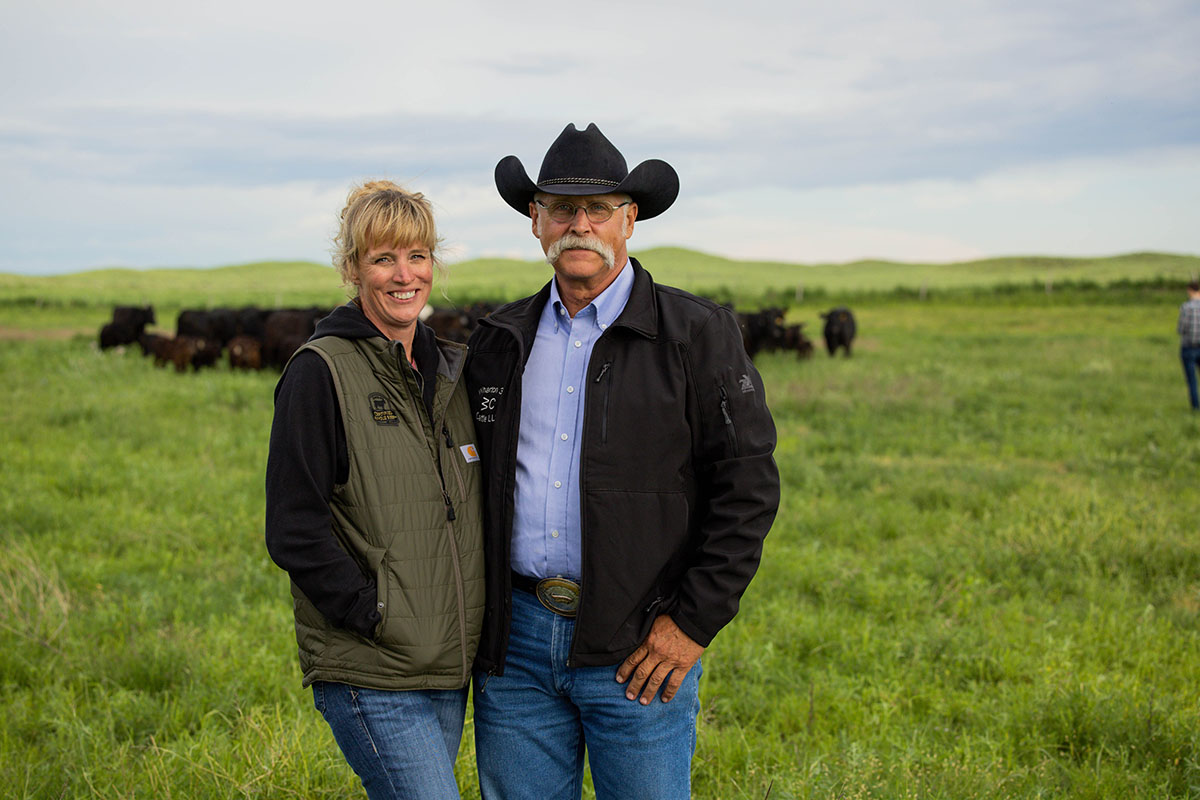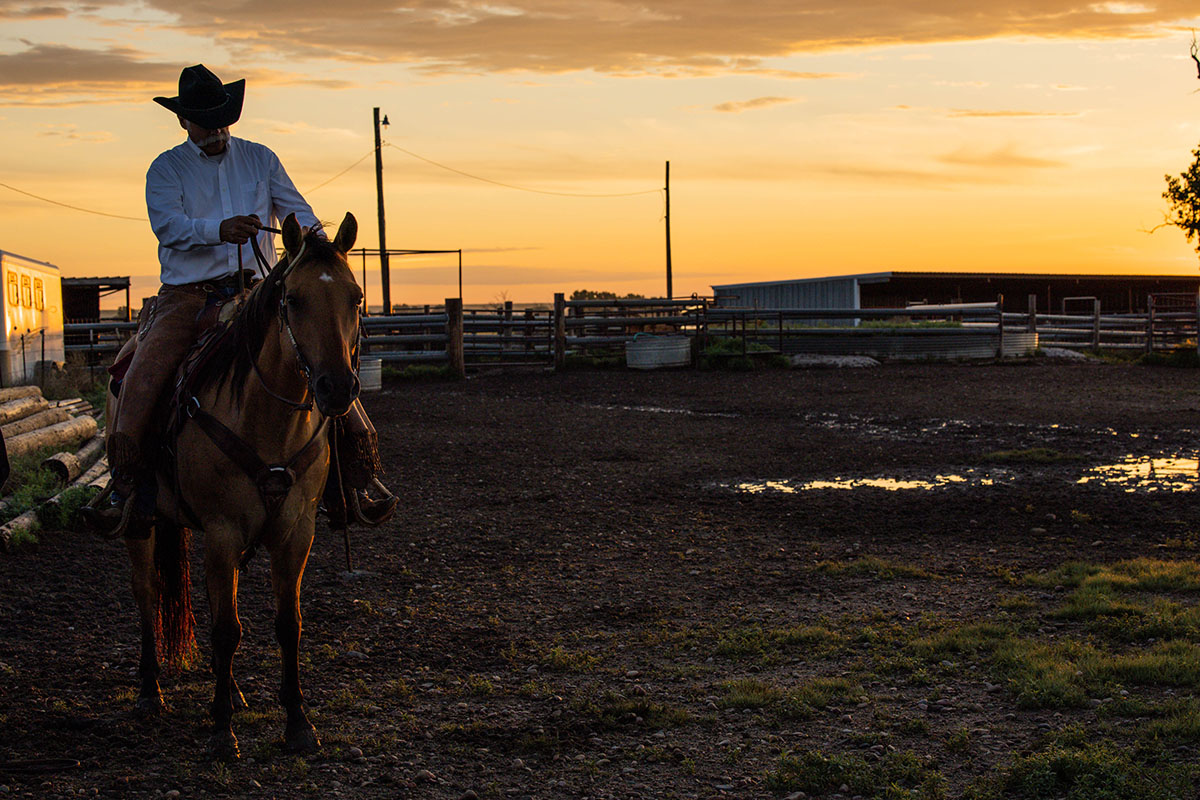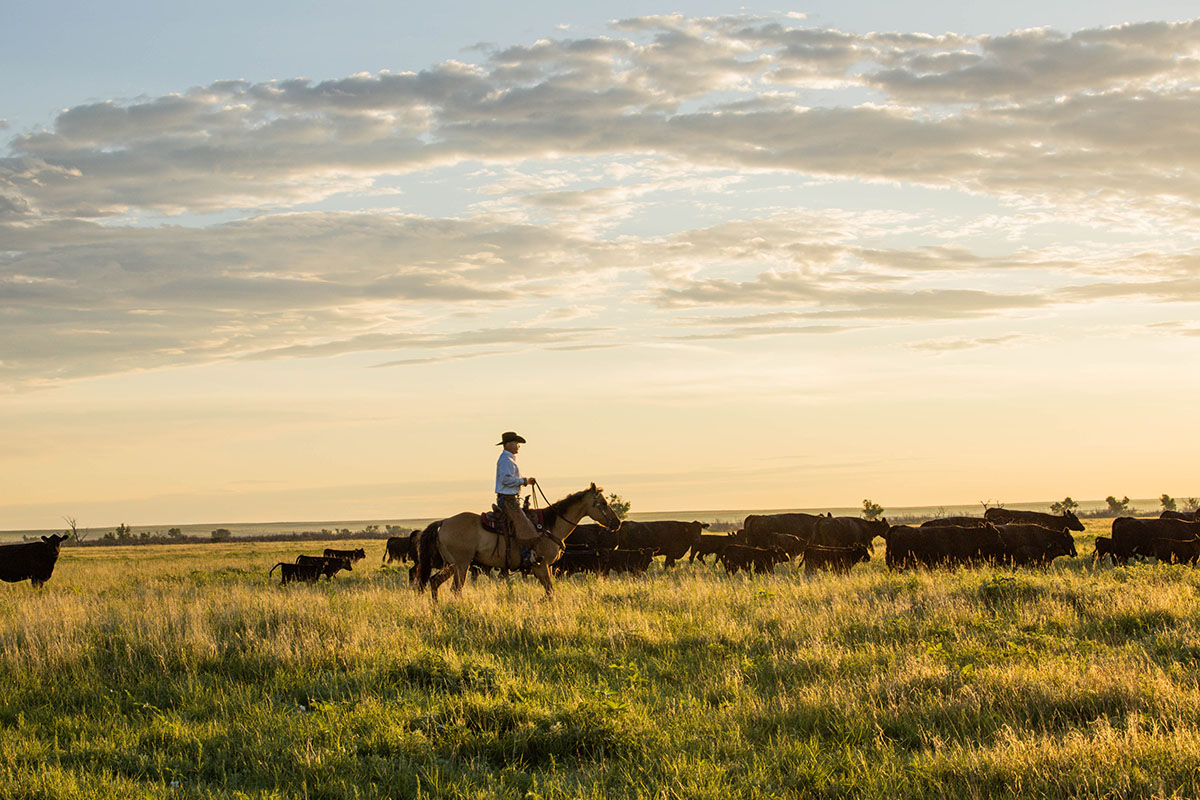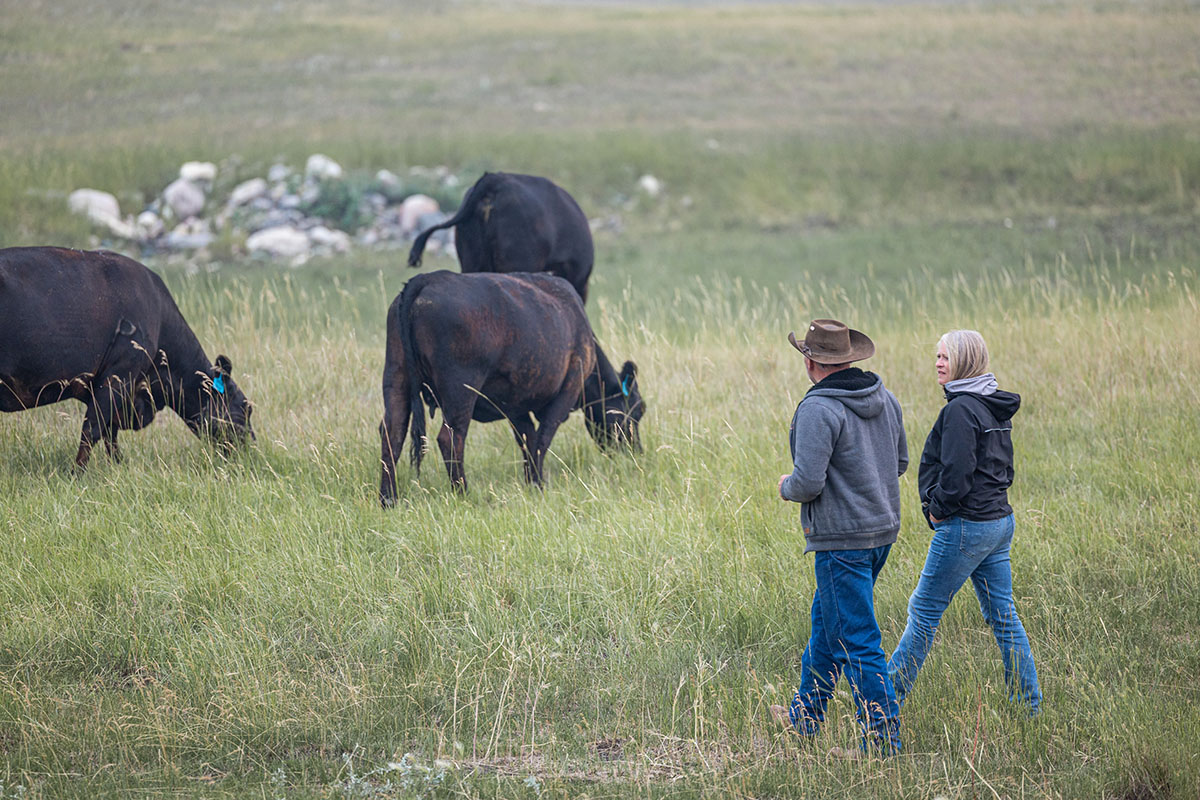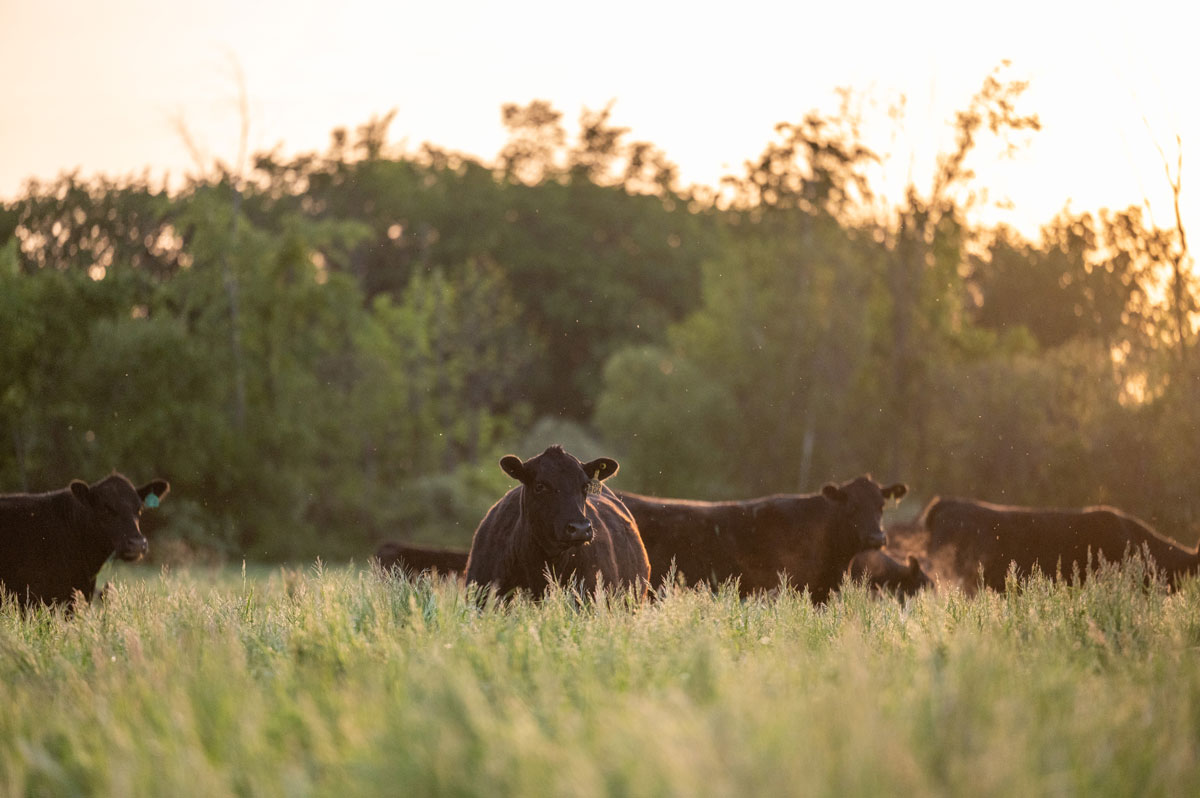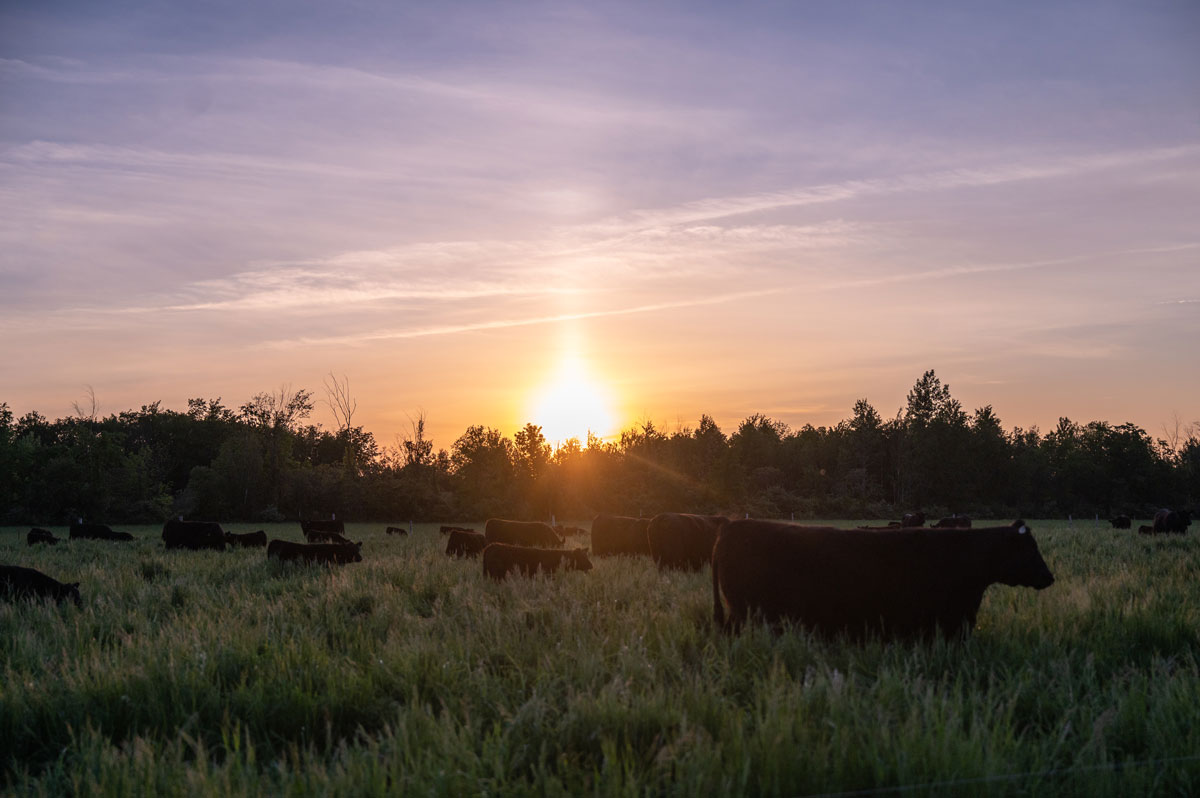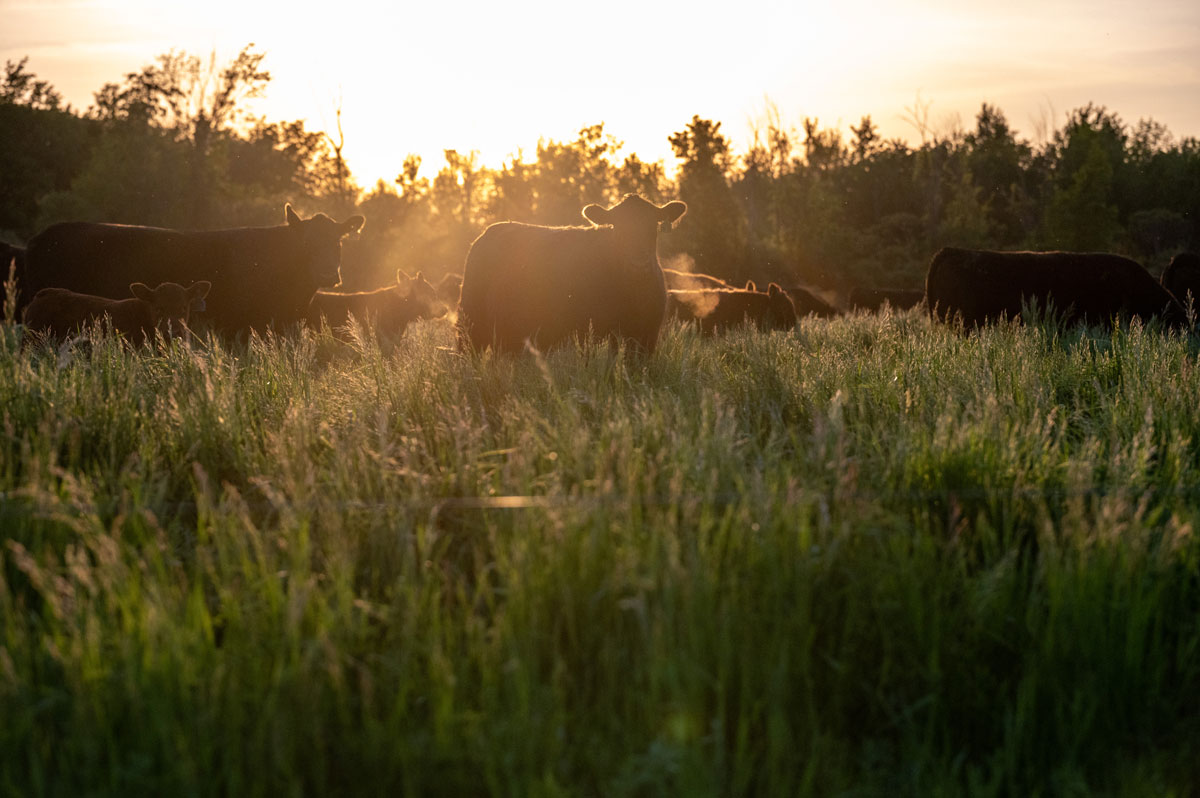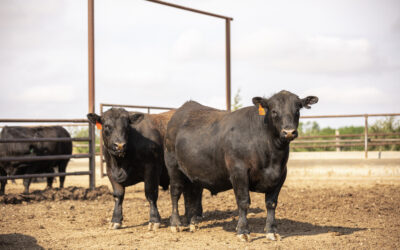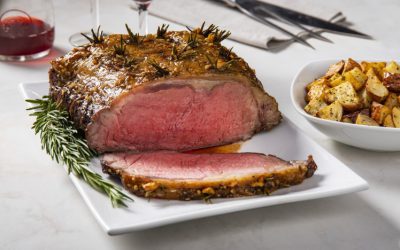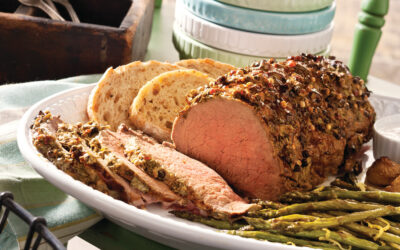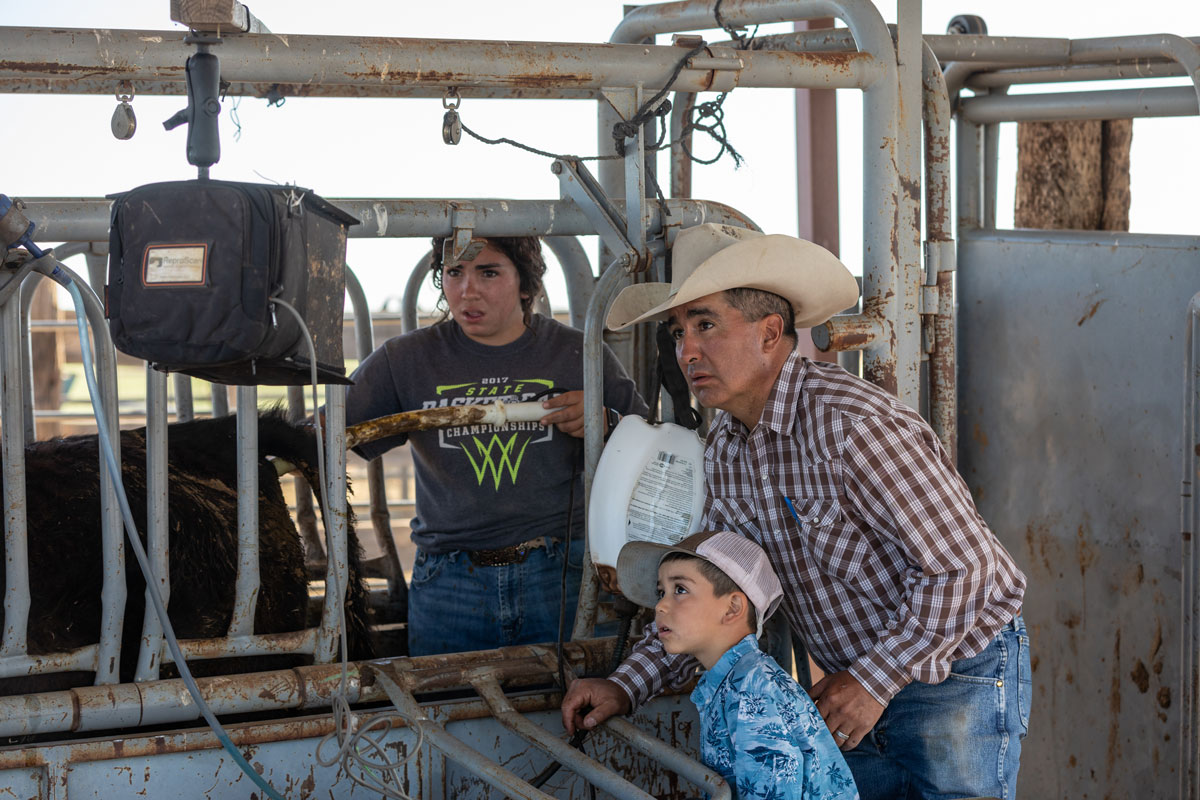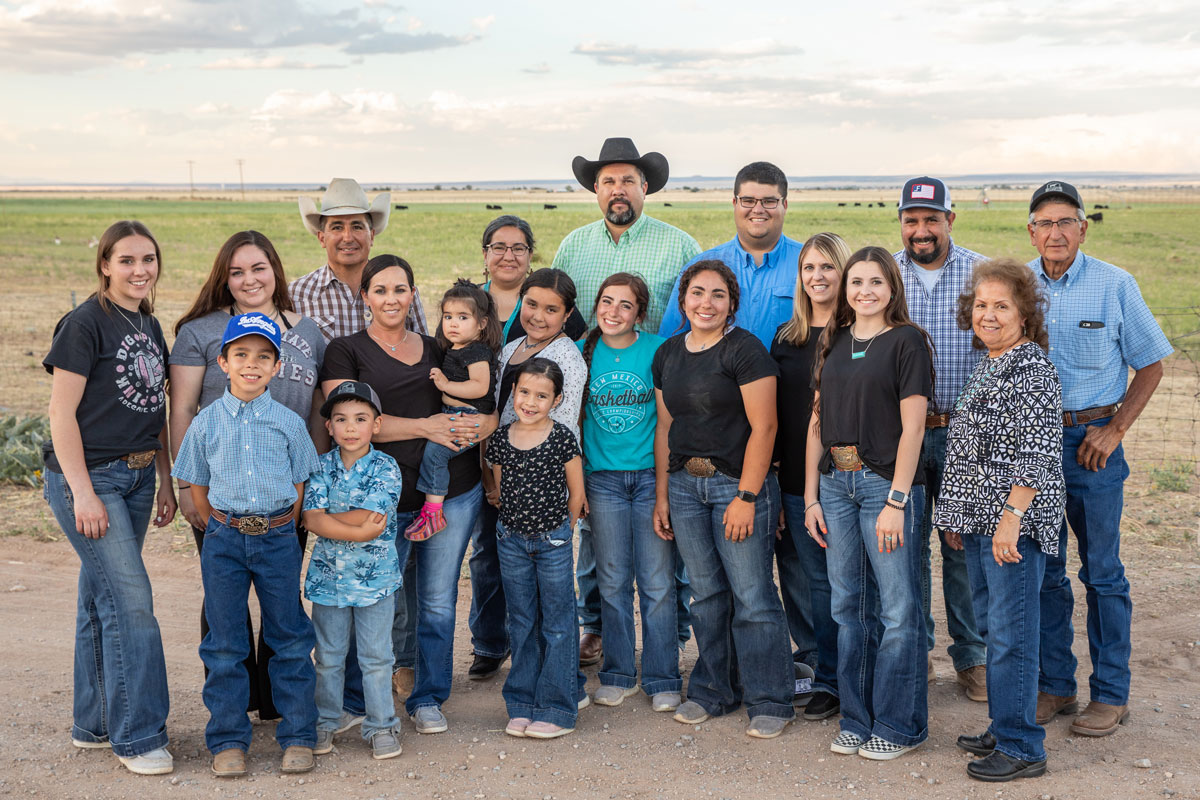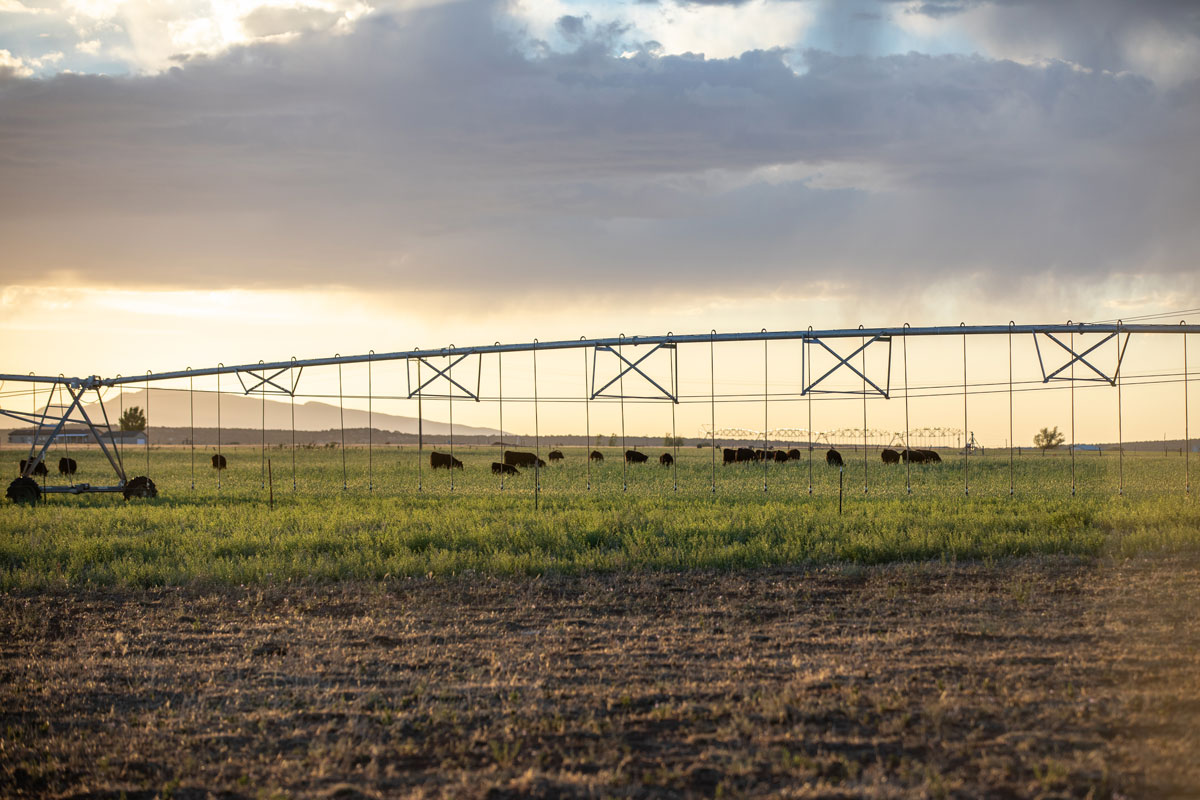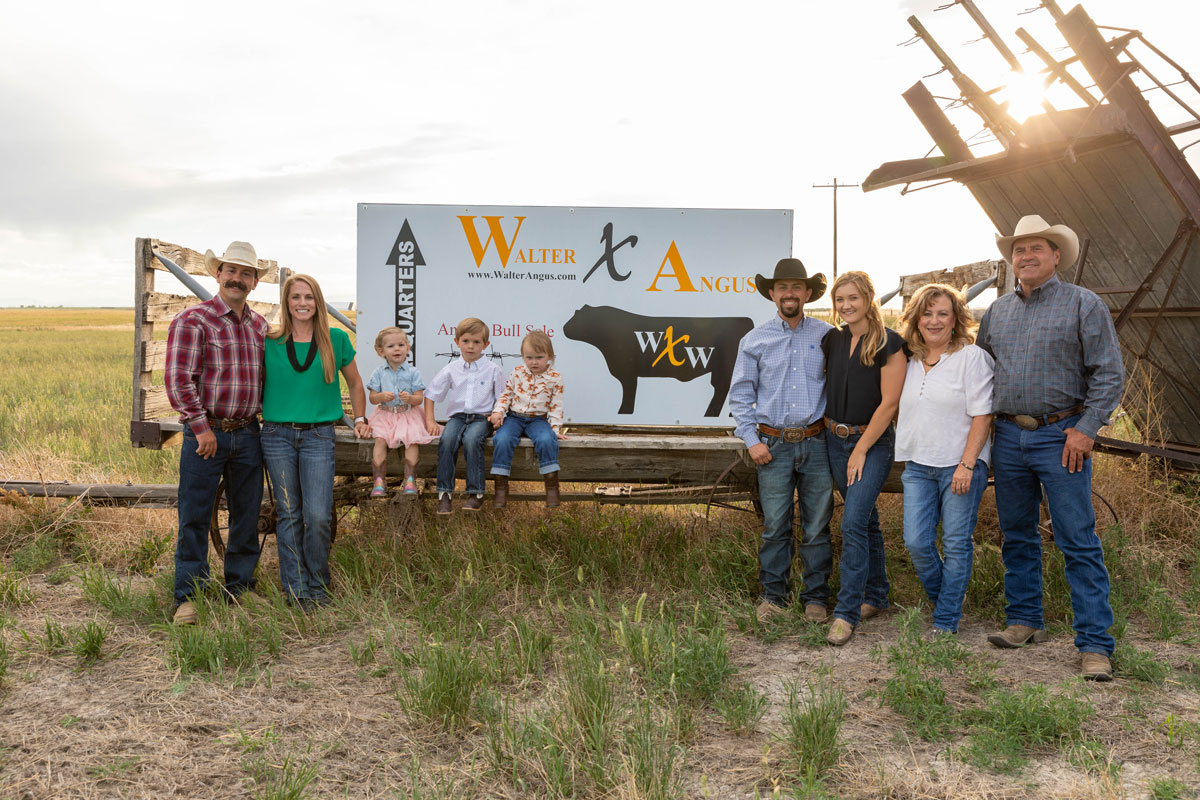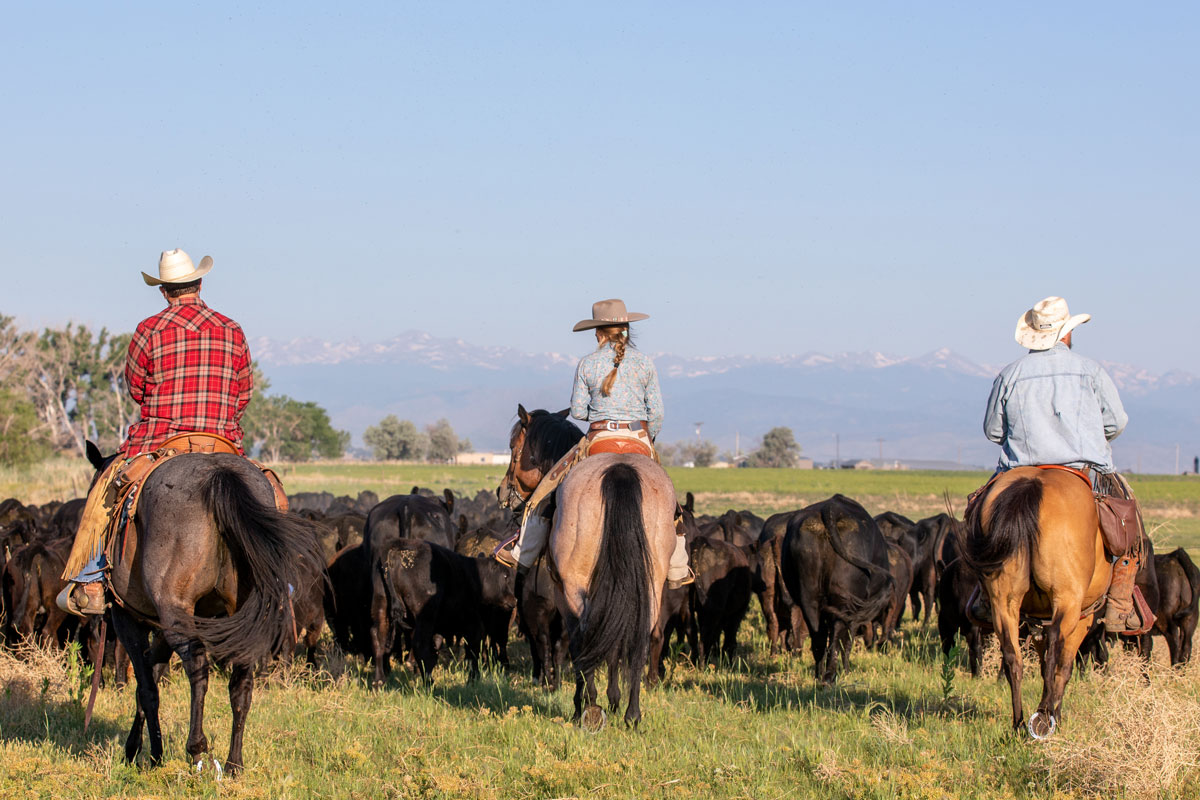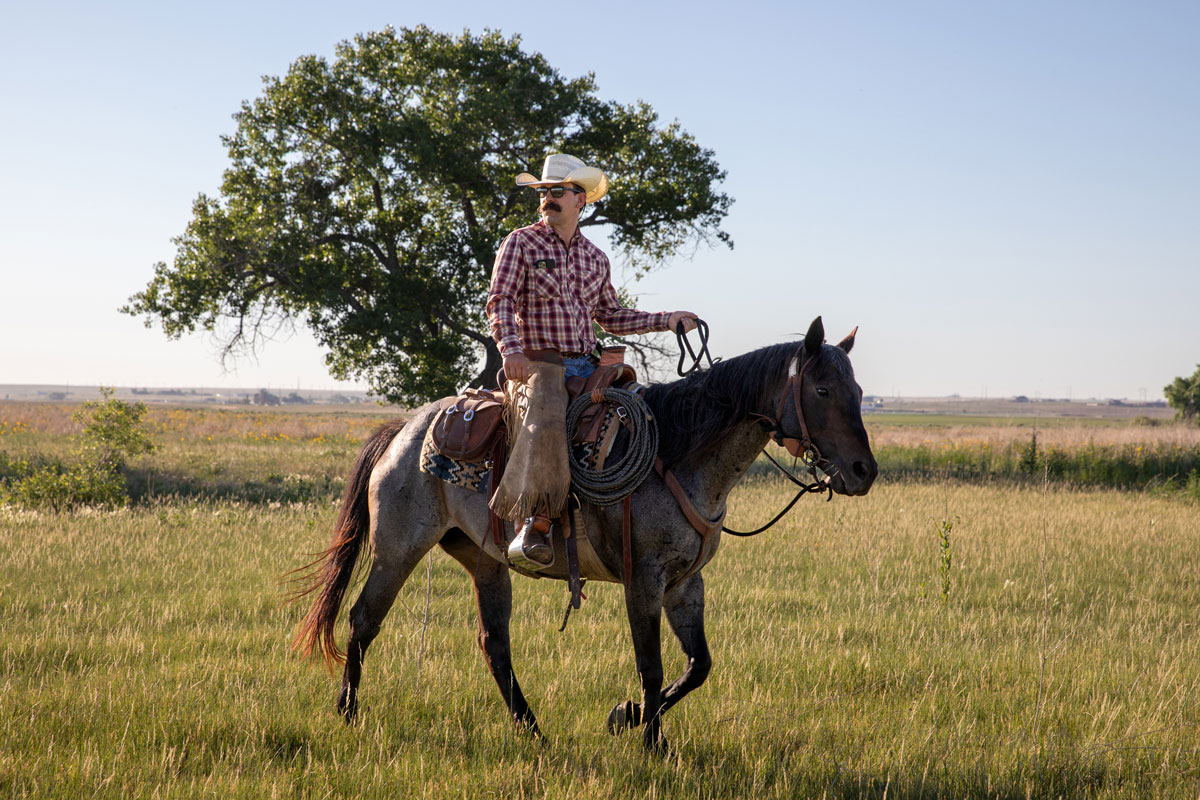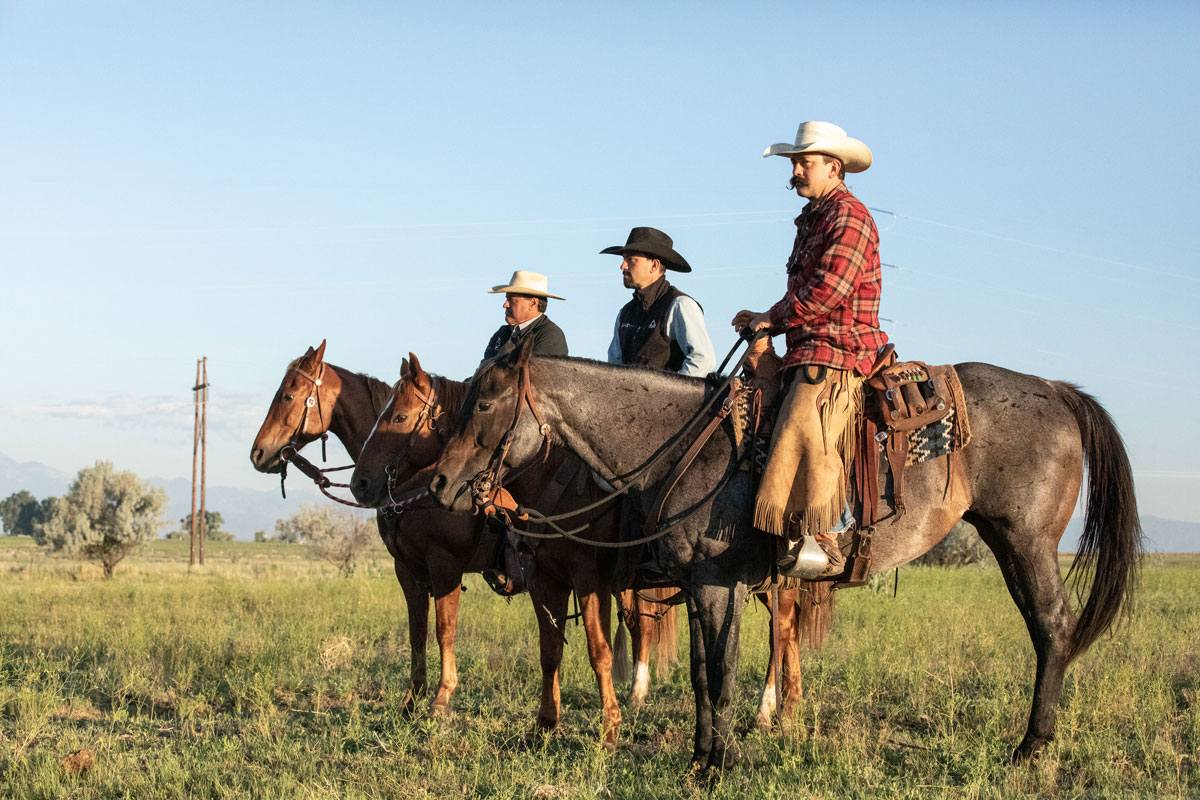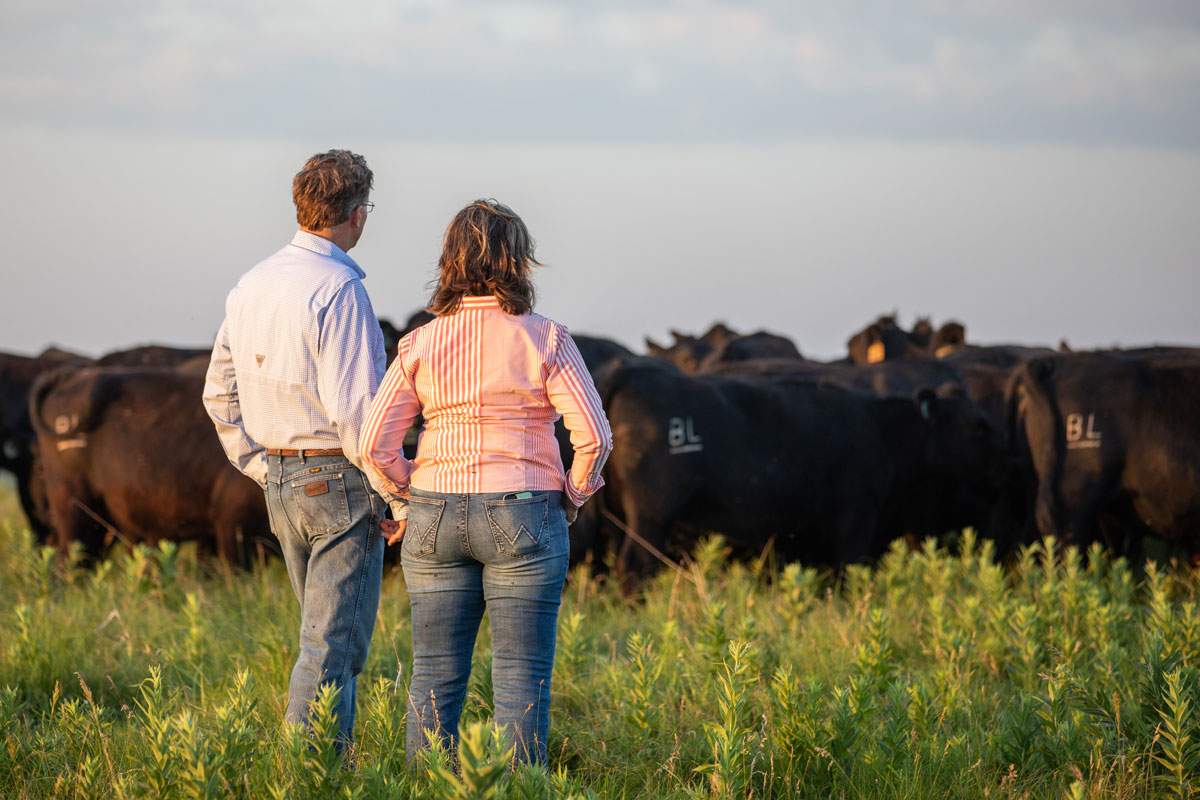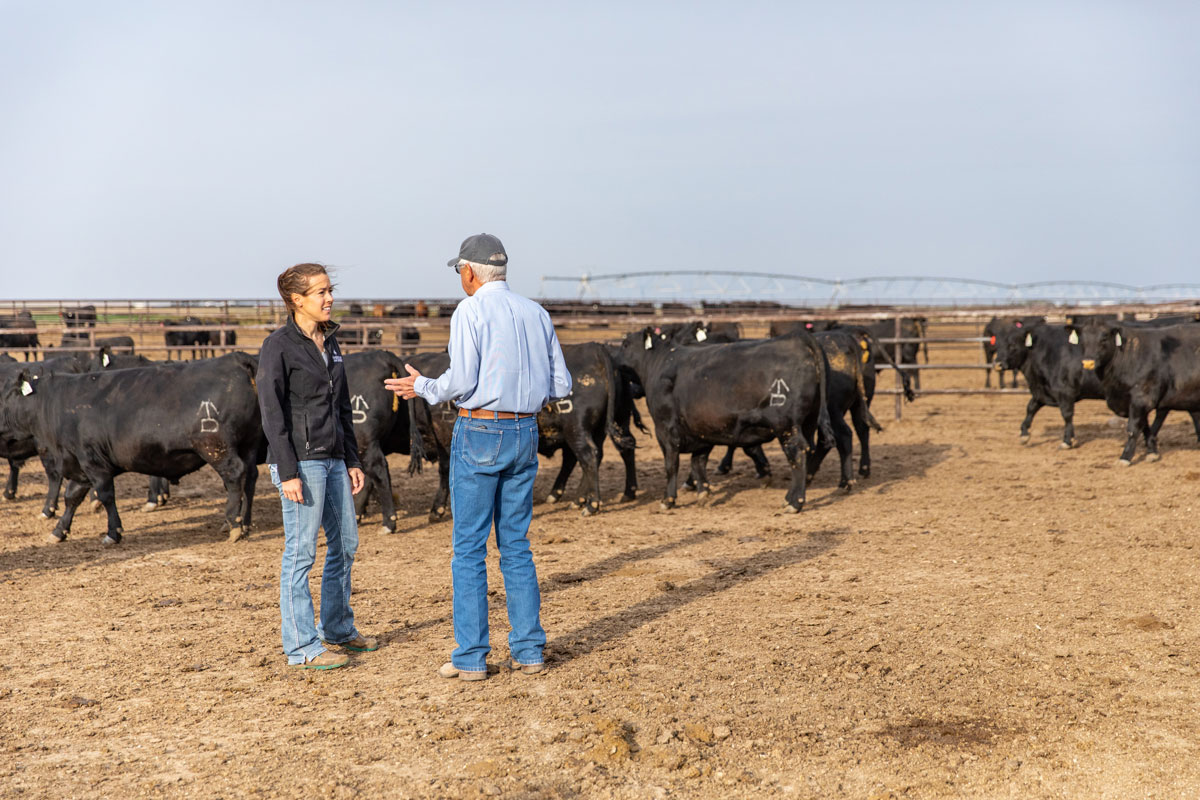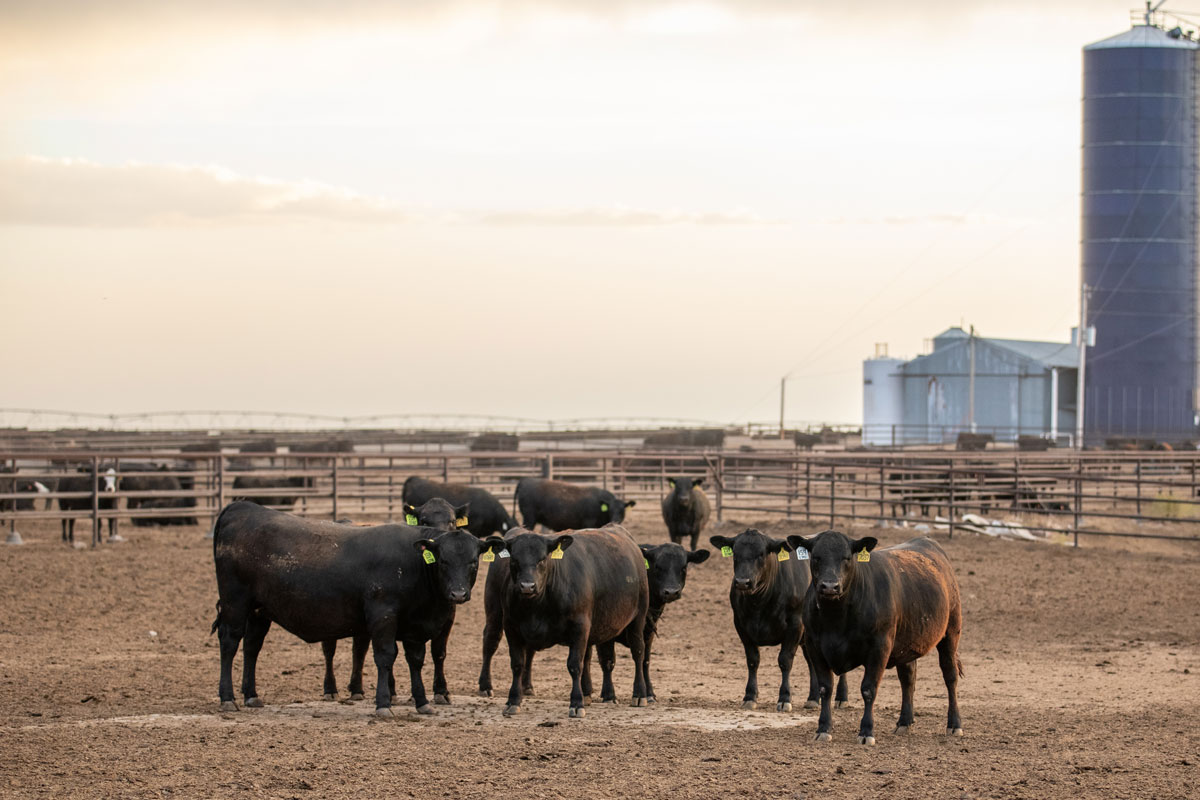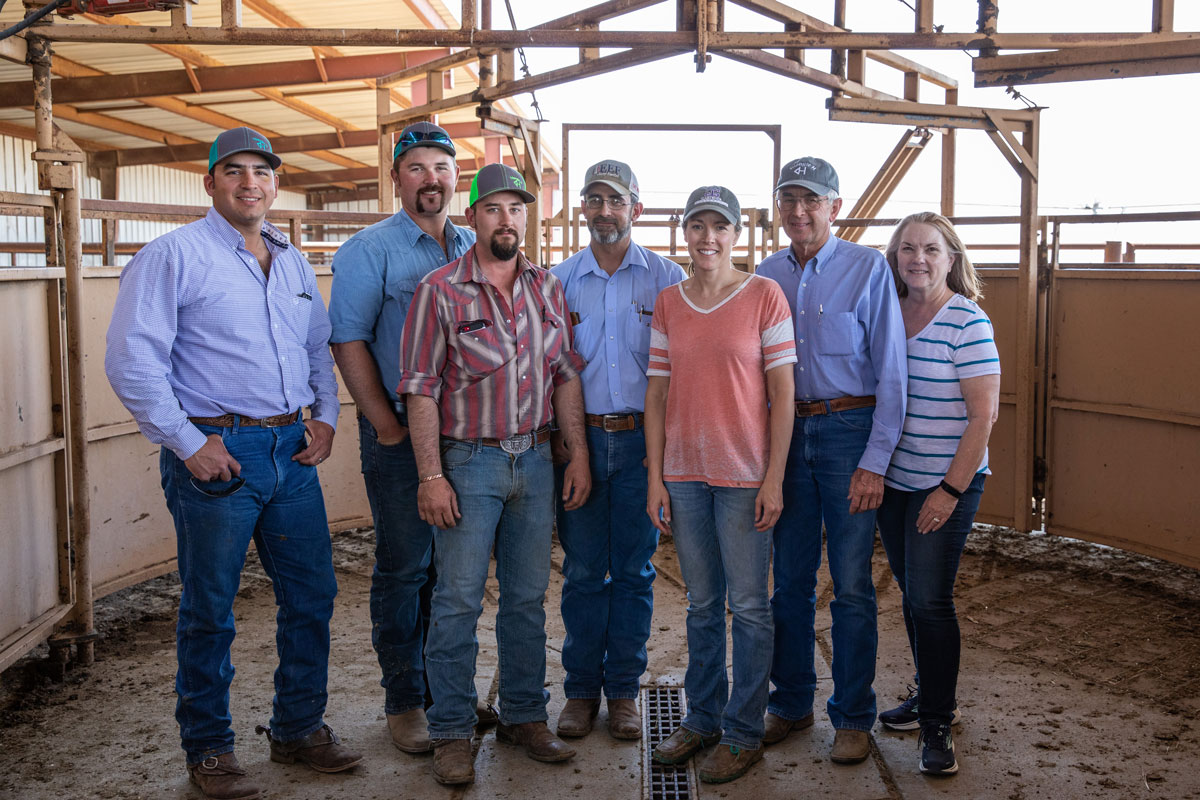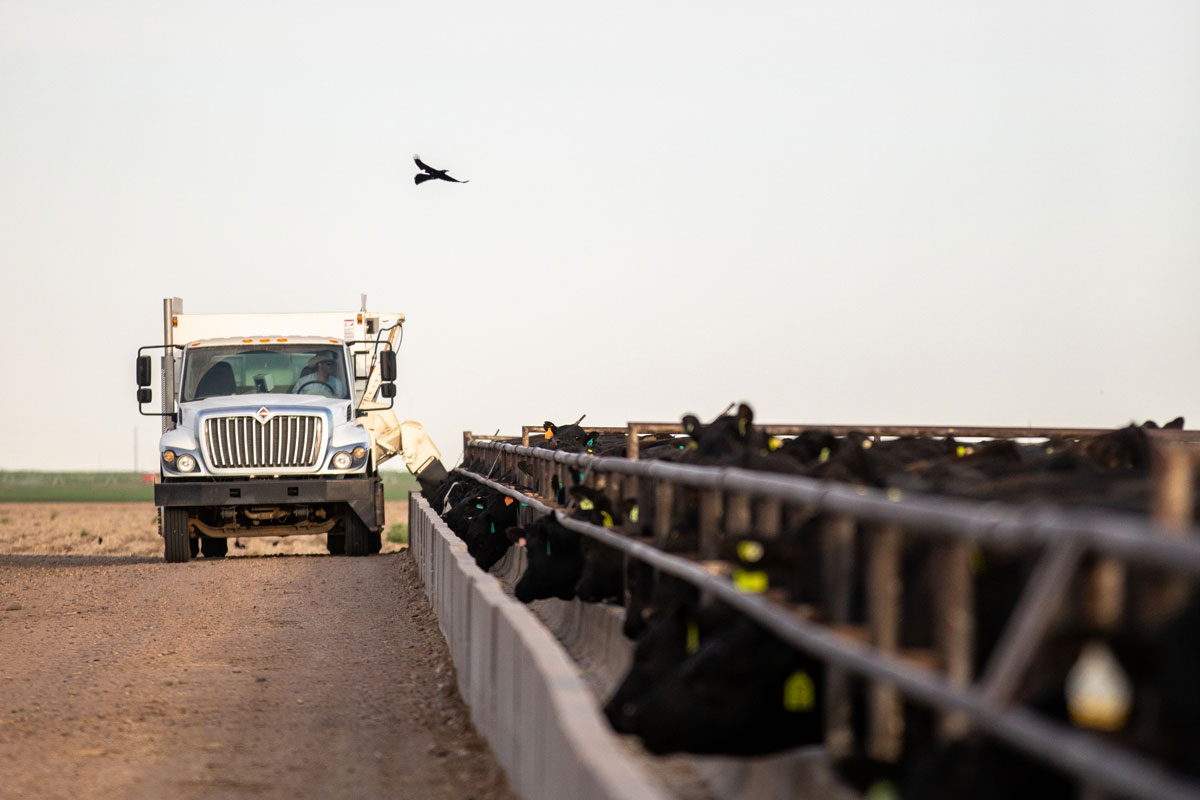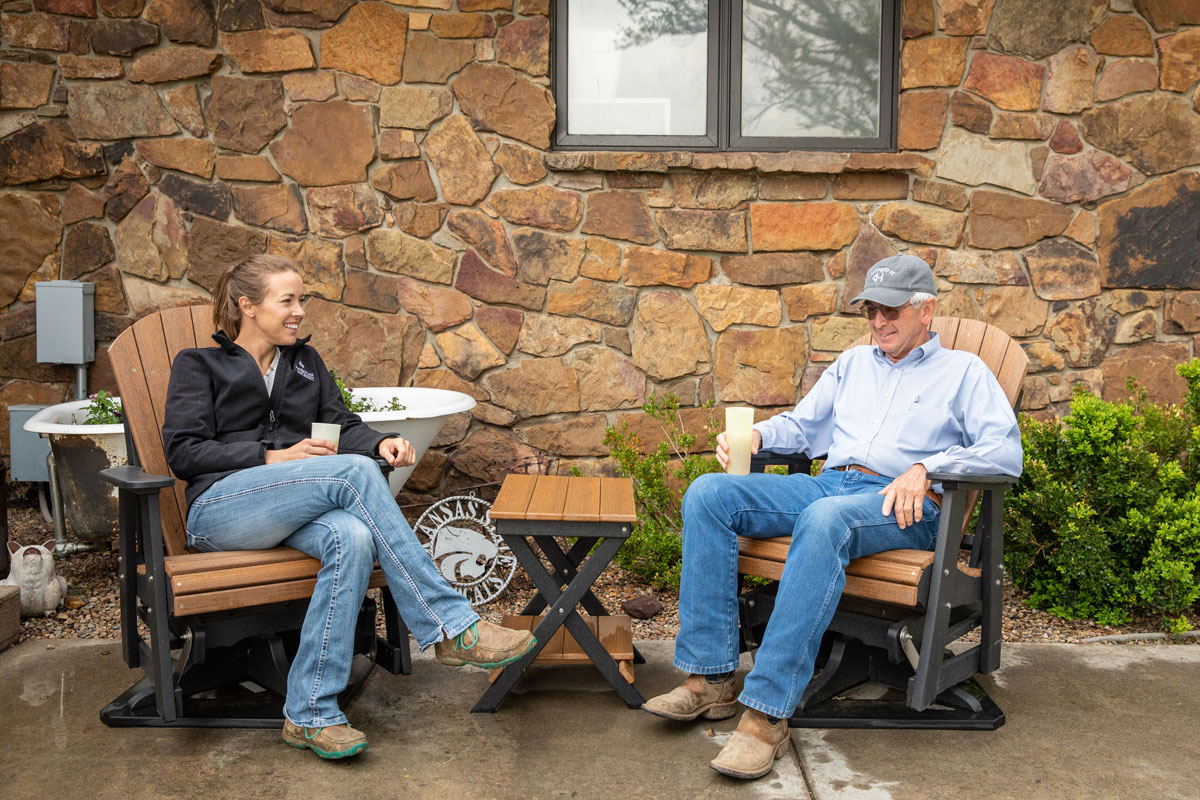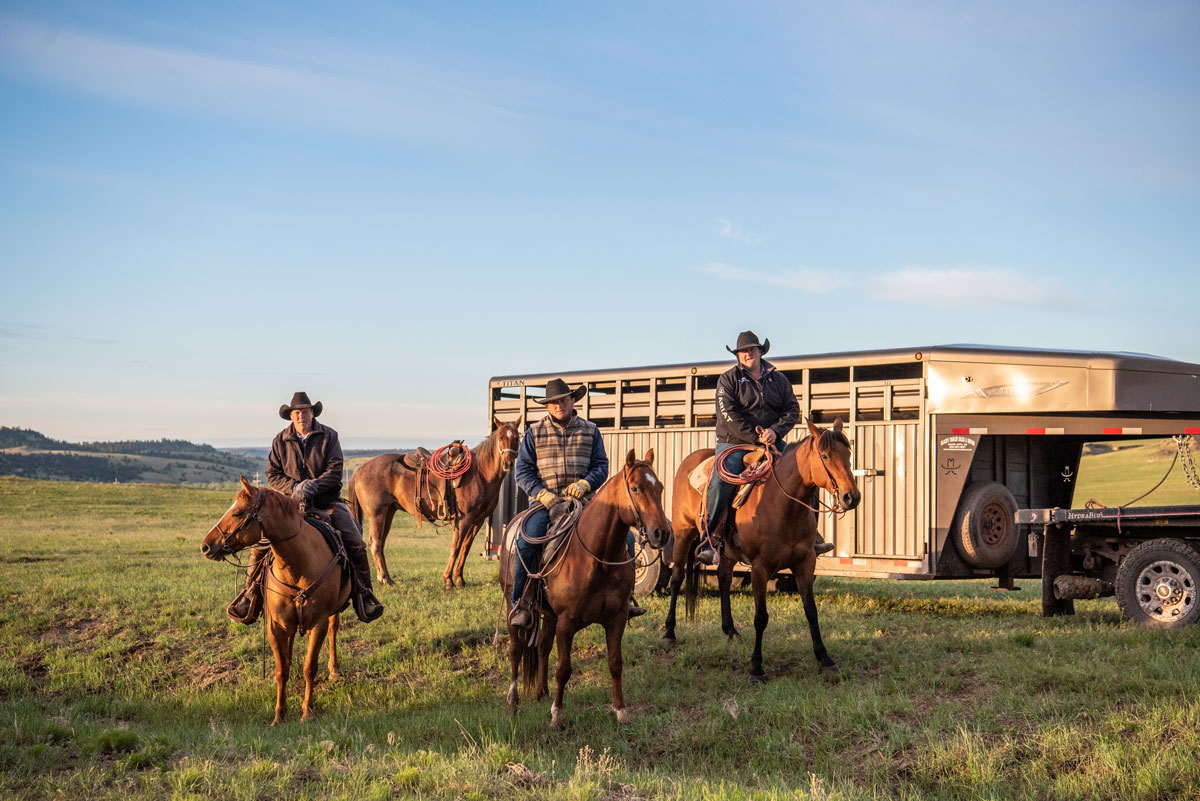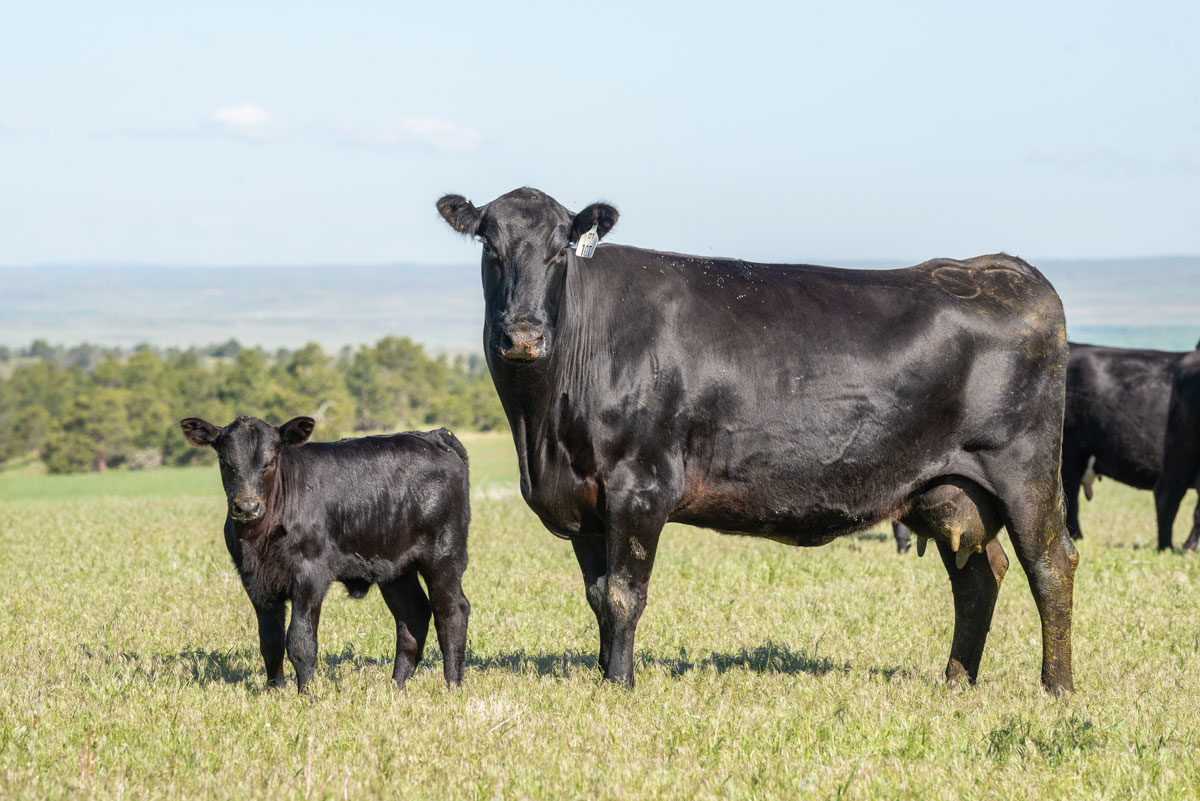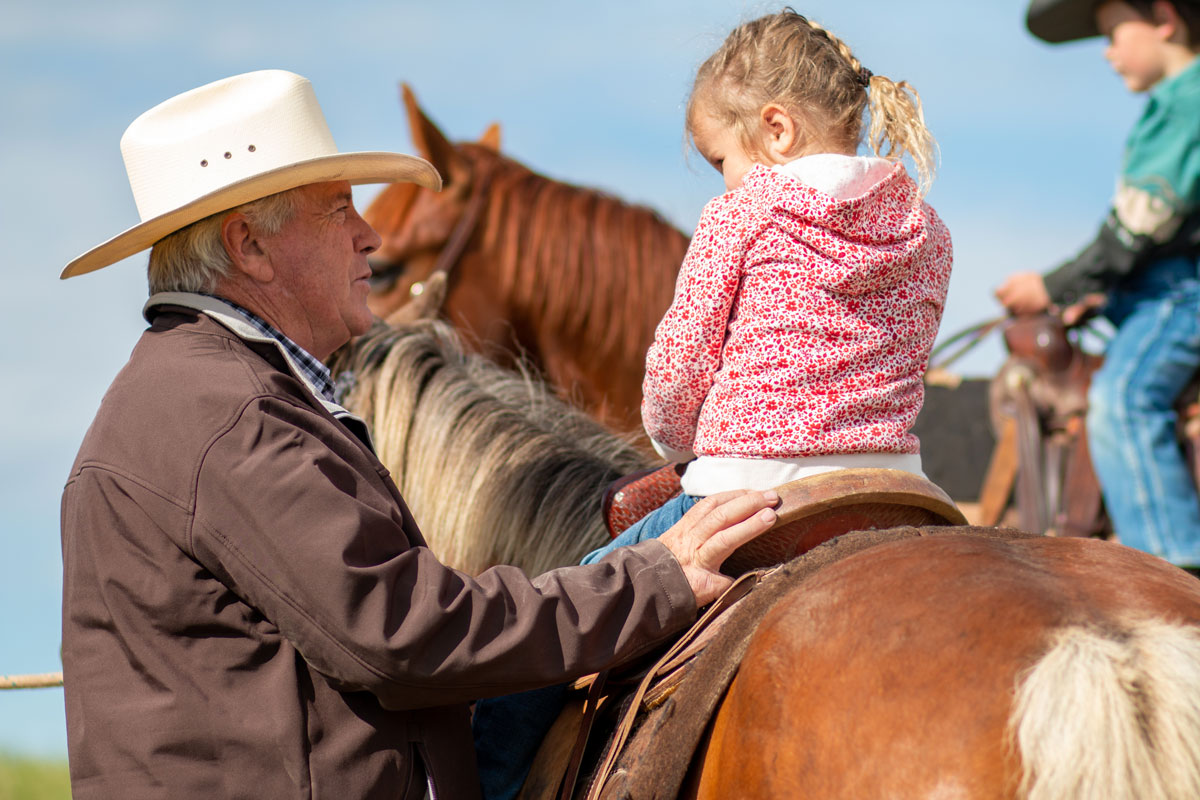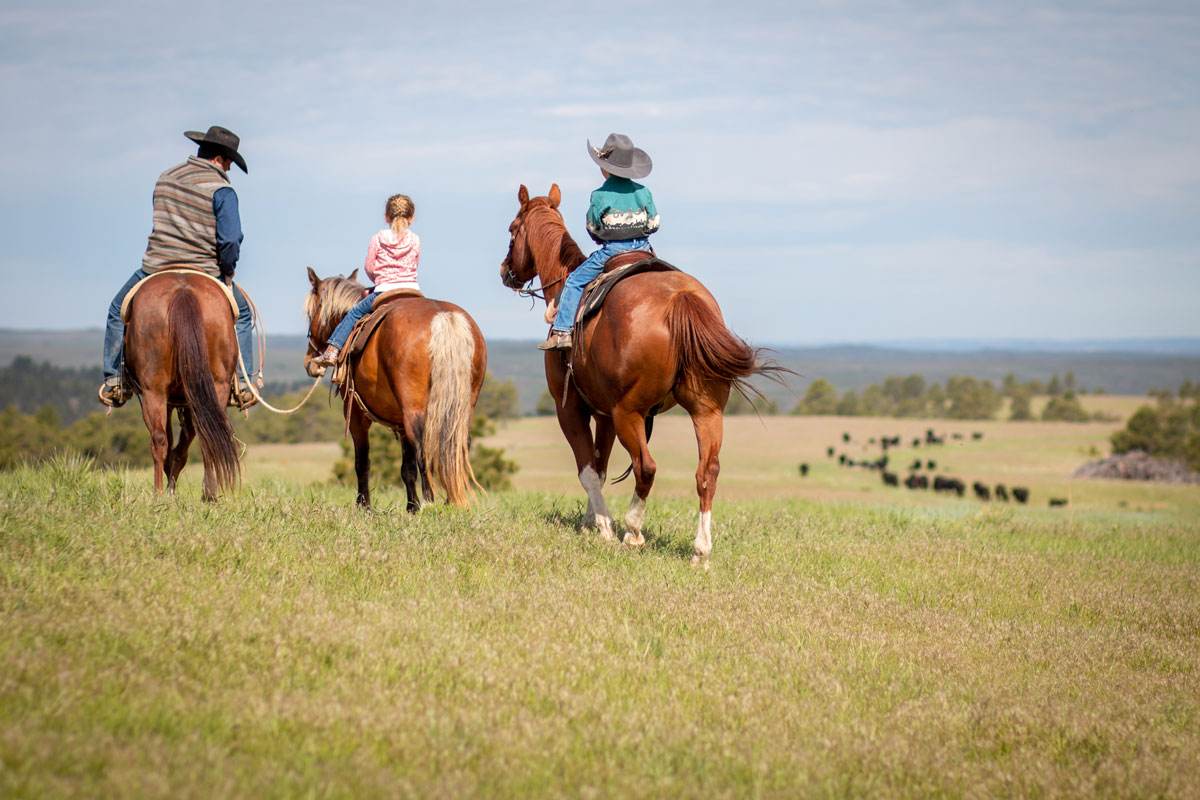
Future Focused Business
Direct-to-consumer beef business, Dakota Angus, earns CAB Progressive Partner Award.
By Kylee Kohls Sellnow
October 2023
It was just a dream to have a truck rolling down highway 52 loaded with Certified Angus Beef ® (CAB) that came directly from their ranches.
Today, it’s a reality for the Bruner and Wendel families who own and operate Dakota Angus, LLC.
Pilot partners in CAB’s Ranch to Table program, these North Dakota ranch families took some of the market volatility into their own hands in April 2022. Their leap of faith now provides high-quality beef options for their communities and diversifies their income.
As seedstock producers, Bruner Angus Ranch, near Drake, and Wendel Livestock, a couple hours to the southeast at LaMoure, North Dakota, were focused on raising herd sires and replacement heifers for customers. Now they sell their finished cattle, as well as those of their customers, through Dakota Angus, a direct-to-consumer beef business.
That partnership earned the 2023 CAB Progressive Partner award, and the two families were recognized in September at the CAB Annual Conference in Las Vegas, Nevada.
“As registered Angus breeders, we’ve always felt ownership of the Certified Angus Beef brand, but even more today as one of the pilot programs for Ranch to Table,” Ashley Bruner says.
Data is Power
Shane Wendel is the numbers guy of the joint operation. With grid marketing data going back over 25 years, CAB and Prime have been constant targets.
“About 10 years ago, I got a note from our cattle buyer that just said one thing: ‘awesome genetics’ next to a load that graded 40 percent Prime,” Shane says. “That was what we needed, to know we were making progress with our cattle.”
And they haven’t stopped targeting quality since.
The last load of steers made 76 percent CAB, including 65 percent Prime this spring.
“When I get our carcass data back, I know by targeting CAB we are creating extra value and are getting paid more for that product,” Shane says. “I have always been and will be a champion of the brand because of that.”
Angus programs proved progress for the Wendels.
“We have huge amounts of data now, and data is power, innovation and value,” Shane says. “Certified Angus Beef is a great example of how many pounds are sold, records that keep being broken and consumers still demanding more.”
With data to back up his brother Mike’s high-performing genetic and management decisions, Shane had confidence in grading their own cattle on a smaller scale to start marketing them direct to consumers and close the loop in capturing 100 percent of the value.
But he needed to find a partner in The Business Breed who shared his vision and energy.
It didn’t take long for Travis and Ashley Bruner to say “yes” when approached with the idea for Dakota Angus.
“Both of our families operate on high integrity, and we have strengths and skillsets that complement each other to make us a great team,” Shane says. “That’s what makes the Bruners a great partner.”
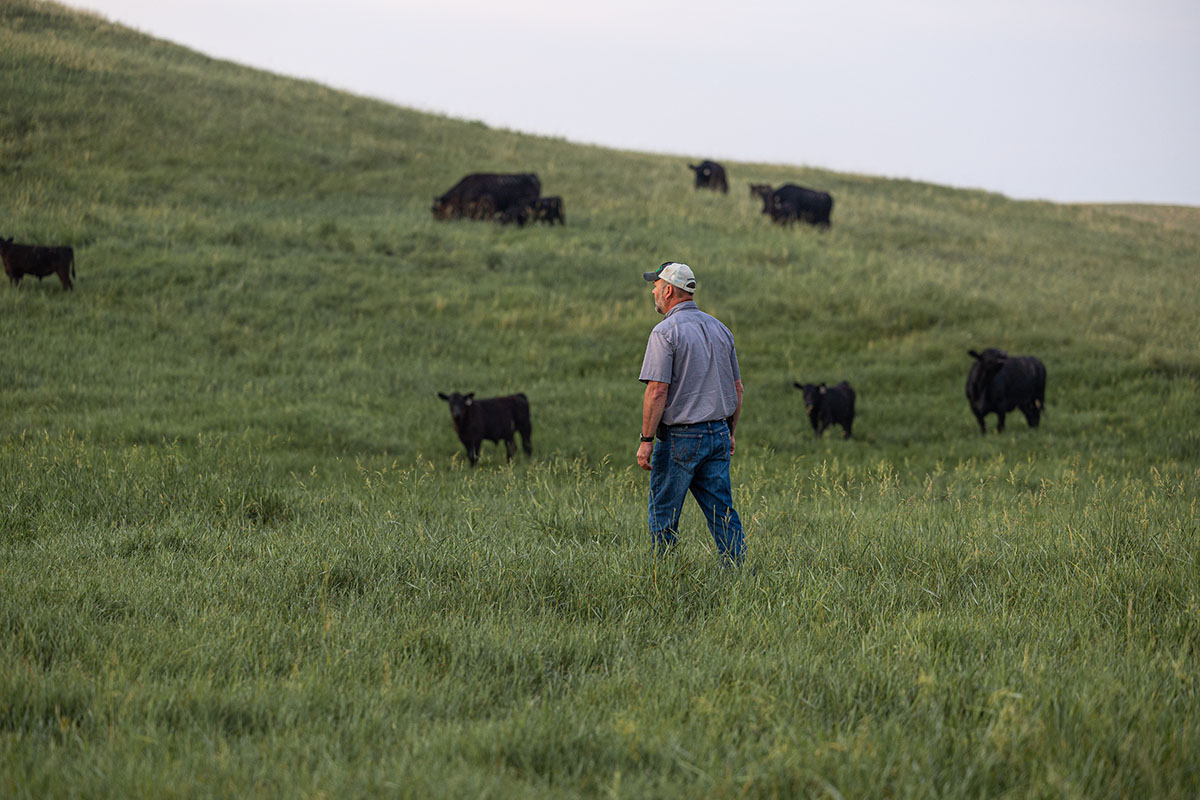
Caption: “When you’re working from conception to consumption, you really can’t veer very far from any one trait. Everything from maternal to growth to carcass all have to be incorporated in a very moderate, conservative direction.” Mike Wendel
The Partnership
Bruner Angus Ranch started in 1952 when Grandpa Frankie brought the first Angus bull to Drake, North Dakota. Since then, Blaine and Kim raised their three sons, Travis, Trenton and Ty, in the Angus business, and now they’re all back home and involved in the operation with their own families.
Today, Travis’s focus is on the 500-cow registered Angus herd and the two bull sales they host annually, selling 150 herd sires to commercial cattlemen.
They know their customers rely on those bulls to sire replacement females and raise calves that pay and weigh up.
“We’re always paying attention to feet and udders, docility and do-abilty,” Travis says. “As our business has grown, we are using carcass EPDs (expected progeny differences) to have more well-rounded cattle, too.”
Closely aligned herd goals help explain why the Bruners and Wendels work so well together.
Mike Wendel and his sons focus on foot scores, marbling and heifer longevity EPDs when making breeding decisions for their 500-cow herd. Embryo transfer plays a large role in their genetic program.
“When you’re working from conception to consumption, you really can’t veer very far from any one trait,” Mike says. “Everything from maternal to growth to carcass all have to be incorporated in a very moderate, conservative direction.”
Feeding out their own steers and heifers over the last 25 years, Mike has had hundreds of head come through his yard. That’s why the Dakota Angus team relies on him to finish all the cattle that end up in a Dakota Angus package.
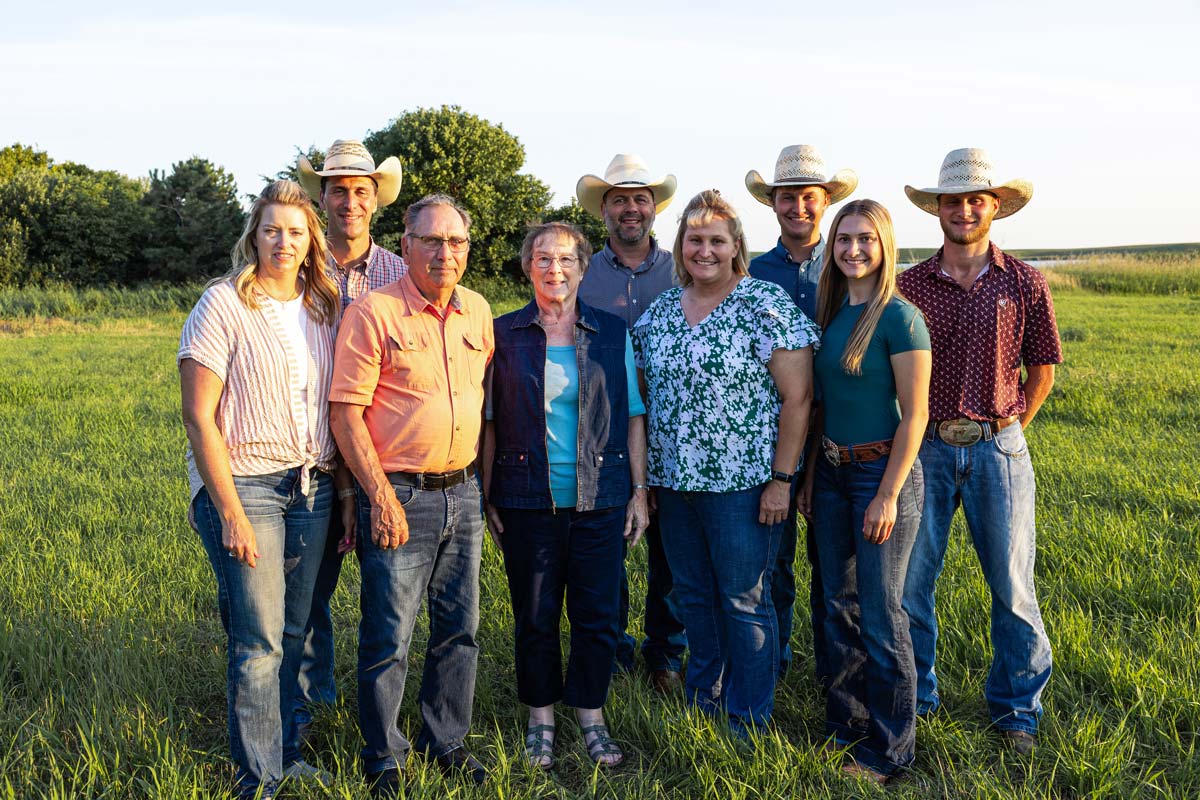
Caption: (left to right) Mary and Shane Wendel, Dennis and Marsha Wendel, Mike, Shari, Ryder, Rose and Reed Wendel
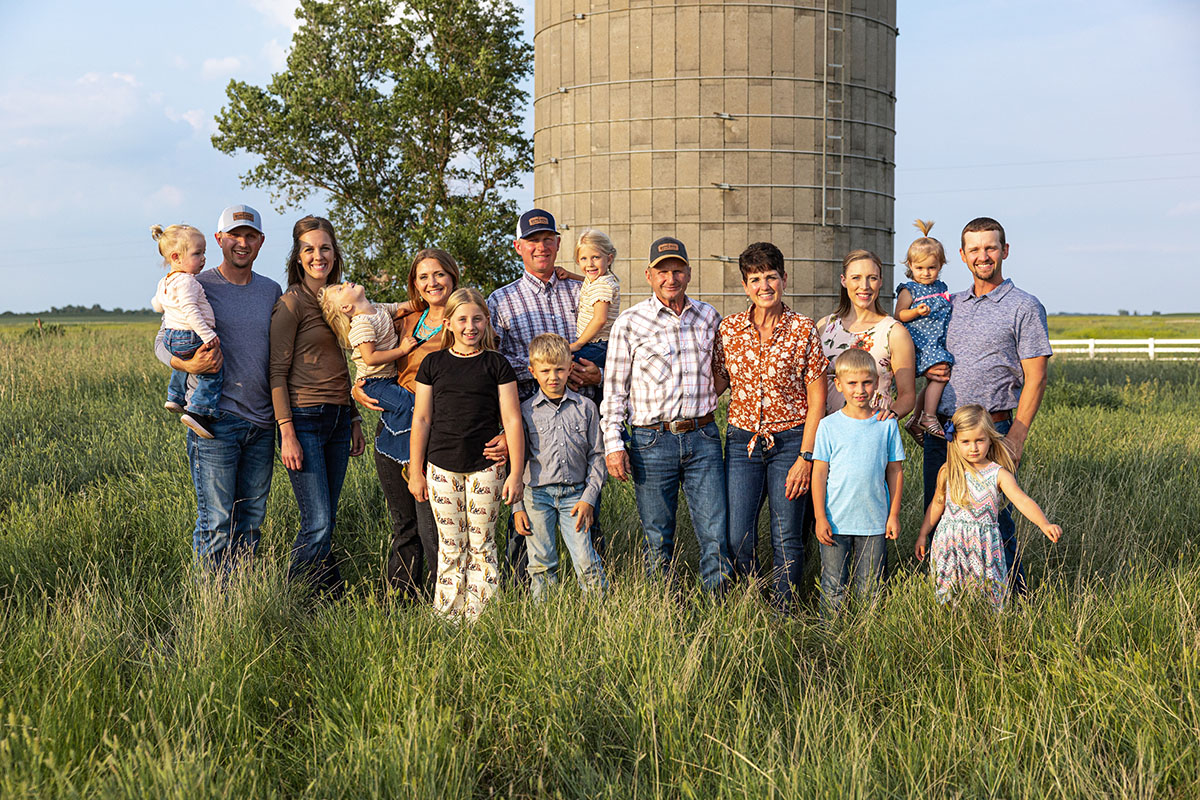
Caption: (left to right) Ty and Erin Bruner with daughter Brynlee, Ashley and Travis Bruner with daughters Rayna (front), Celia (front), Josie and son Frankie (front), Cecelia Bruner, Blaine and Kim Bruner, Rachel and Trenton Bruner with son Landon (front) and daughters Lena (front) and Lillian
A Relationship Business
The Bruner and Wendel families met while serving on the North Dakota Angus Association board six years ago. Traveling to Angus Convention and meeting people from across the breed opened their eyes to business expansion opportunities.
Including what CAB does to market high-quality beef.
After the two families decided to launch Dakota Angus, they knew they wanted to incorporate the brand in those plans, to help inform consumers about differences in beef quality and value.
“We’re confident in the product we have,” Ashley says. “But the confidence we have with Certified Angus Beef behind us means so much more. And the more that we can talk to people and engage them with what we’re doing as producers and beef suppliers, the better it is for all beef.”
In the last 12 months, they’ve harvested more than 80 head in a federally inspected facility two hours from the Dakota Angus ranch store north of Drake. Federally grading every carcass processed lets them sell their beef according to the quality grade, allowing more control over market price for each pound.
It also opens doors to talk with each customer about what they want in an eating experience.
This sparks other conversations about how to cook cuts like the teres major, that aren’t always found in a grocery store in rural North Dakota.
Ranch to Table and Prime ribeyes always sell out first.
If there are surplus items in the freezer, those are typically roasts and grinds. Ashley moves them out by offering bundles at a discount or through great relationships with local schools and healthcare facilities.
Frozen halves and wholes as well as retail cuts sell individually vacuum-sealed out of the walk-in freezer the Bruners built in their garage-converted meat shop.
“Quality control includes Travis in our backyard at the grill,” Ashley says with a grin that recognizes a common bond. The beef they serve their own family is now a part of moments and memories for more neighbors because of Dakota Angus.
Even at the Tuesday night baseball game two towns over, you can find one of the Bruner brothers flipping burgers at the concession stand.
It’s really family business from start to finish for them.
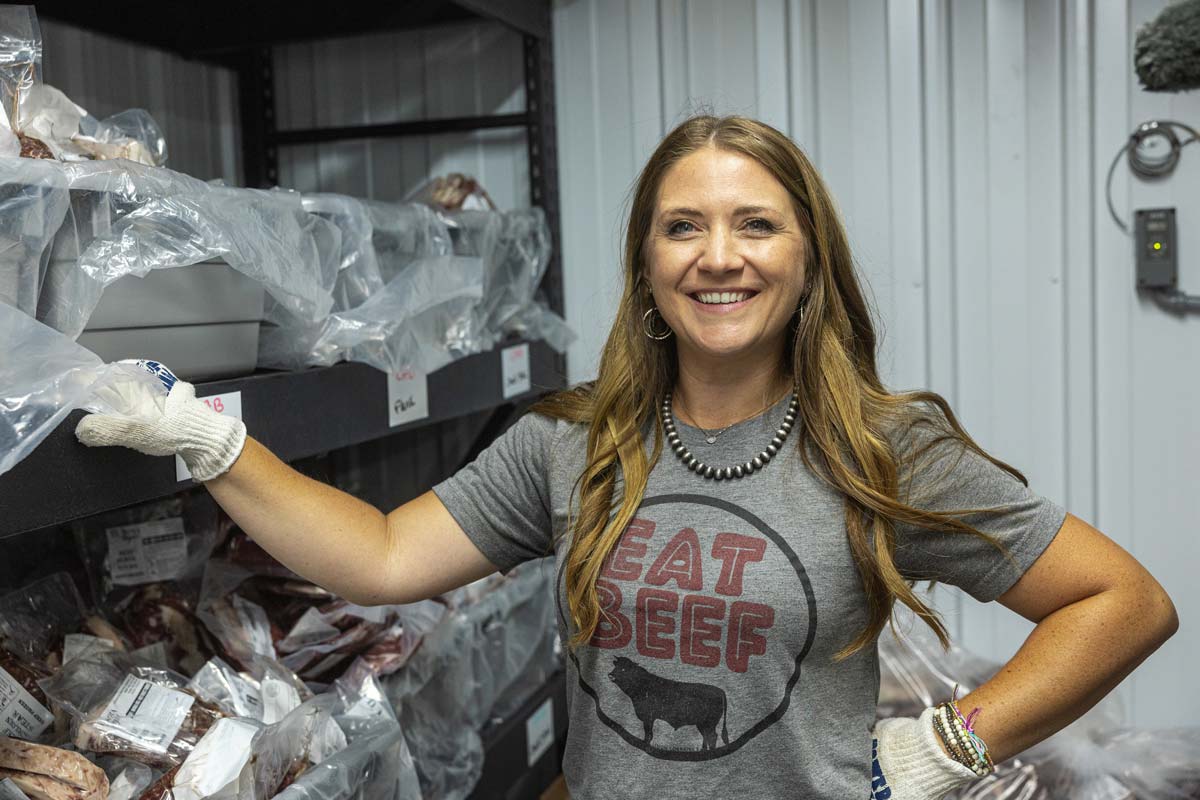
Caption: Founded in 2022, Dakota Angus was one of the first to be a part of the Certified Angus Beef ® Ranch to Table program.
“Diversifying and adding Dakota Angus to the lineup of what Bruner Angus and Wendel Livestock are gives our kids an opportunity to come back someday,” says Ashley Bruner.
The Future of Dakota Angus
The next generation was top of mind for the Bruners and Wendels when they decided to find a processor to harvest, inspect and grade their high-quality Angus cattle.
“It’s hard these days for a farm or a ranch to support one family or multiple families at that,” Ashley says. “In rural America, if we want it to make a turn and grow again, we need to give opportunity to the next generation. Diversifying and adding Dakota Angus to the lineup of what Bruner Angus and Wendel Livestock are gives our kids an opportunity to come back someday.”
She knows it might not look like coming back to work directly with the land, but to be involved and contribute to the entire business. Roles like caring for the cattle, improving seedstock genetics, and growing crops are still going to be important. But diversified endeavors need to have team members who are marketing specialists, meat scientists, processing and customer-service experts for growth and development, too.
Travis and Ashley’s oldest daughter, Rayna, is already developing some of these skills alongside her mom at just nine years old.
Helping take and pack orders, she enjoys learning with her family as they grow this new business. Besides working cattle with her dad, one of her favorite parts about Dakota Angus is loading up the truck to make deliveries and go to farmer’s markets with her mom.
“That’s why Dakota Angus is here,” Ashley says. “We are building a foundation now to ensure that Dakota Angus is around for generations to come.”
This story was originally published in the Angus Journal.
You may also like
Certified Angus Beef Celebrates 45th Year with Strong Sales
It has been 45 years since Certified Angus Beef’s first customer purchased a strip steak at Renzetti’s IGA grocery store. Since then, consumer demand for high-quality beef has grown, ultimately driving demand for premium Angus genetics.
High-Quality Beef and Experiences Promised with Summer Internship
Internships help students take skills learned in the classroom and apply it before graduation or entering the workforce. Last summer’s interns described their experiences with CAB as engaging, fun, empowering valuable and challenging. Read more about these internship opportunities!
Quality Wins, Again
Sara Scott, Vice President of Foodservice for Certified Angus Beef, emphasizes the importance of taste over price in the beef market during the Feeding Quality Forum. As consumer demand for high-quality beef grows, Scott highlights the need for increased supply and encourages communication with packer partners to meet the demand for Prime beef.


